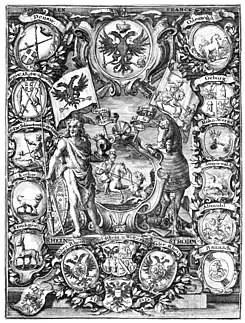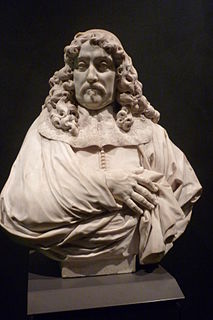 W
WThe Free Imperial knights were free nobles of the Holy Roman Empire, whose direct overlord was the Emperor. They were the remnants of the medieval free nobility (edelfrei) and the ministeriales. What distinguished them from other knights, who were vassals of a higher lord, was the fact that they had been granted Imperial immediacy, and as such were the equals in most respects to the other individuals or entities, such as the secular and ecclesiastical territorial rulers of the Empire and the Free Imperial cities, that also enjoyed Imperial immediacy. However, unlike all of those, the Imperial knights did not possess the status of Estates (Stände) of the Empire, and therefore were not represented, individually or collectively, in the Imperial Diet.They tended to define their responsibilities to the Empire in terms of feudalized obligations to the Emperor, including personal service and strictly voluntary financial offerings paid to the Emperor himself.
 W
WChristoph Beetz was ennobled by Emperor Charles VI in Vienna, Austria on 27 January 1734 as "Beez von Beezen" after receiving an heritable membership of the old class of the Holy Roman Empire. His military career is highlighted by his command of a regiment at the age of 20 and his final appointment as Swedish Platz-Major and Stabs-Major of the military garrison in Stralsund. He was ranked with the same duties as a Stadt-General. His 1746 portrait still graces the interior of Saint Mary's Church, Stralsund, Germany where he is buried.
 W
WGottfried "Götz" von Berlichingen, also known as Götz of the Iron Hand, was a German (Franconian) Imperial Knight (Reichsritter), mercenary, and poet. He was born around 1480 into the noble family of Berlichingen in modern-day Baden-Württemberg. Götz bought Hornberg Castle (Neckarzimmern) in 1517, and lived there until his death in 1562.
 W
WLudwig Ritter von Fautz was vice admiral and commander of the Austrian Navy.
 W
WOtto Heinrich von Gemmingen zu Hornberg was a member of the aristocratic Gemmingen family. He was a diplomat and enlightenment writer, a Freemason and a friend of the composer Wolfgang Amadeus Mozart.
 W
WFlorian Geyer von Giebelstadt was a German nobleman, diplomat, and knight. He became widely known for leading peasants during the German Peasants' War.
 W
WFree Imperial Knight Andries de Graeff was a very powerful member of the Amsterdam branch of the De Graeff - family during the Dutch Golden Age. He became a mayor of Amsterdam and a powerful Amsterdam regent after the death of his older brother Cornelis de Graeff. Like him and their father Jacob Dircksz de Graeff he opposed the house of Orange. In the mid-17th century he controlled the finances and politics.
 W
WUlrich von Hutten was a German knight, scholar, poet and satirist, who later became a follower of Martin Luther and a Protestant reformer.
 W
WGeorg Wolf of Kotzau, nicknamed the rich was an Imperial Knight and Amtmann and Governor.
 W
WFranz von Sickingen or Francis of Sickingen was a German knight who, along with Ulrich von Hutten, led the Knight's Revolt and was one of the most notable figures of the early period of the Reformation.
 W
WHeinrich Friedrich Karl Reichsfreiherr vom und zum Stein, commonly known as Baron vom Stein, was a Prussian statesman who introduced the Prussian reforms, which paved the way for the unification of Germany. He promoted the abolition of serfdom, with indemnification to territorial lords; subjection of the nobles to manorial imposts; and the establishment of a modern municipal system.